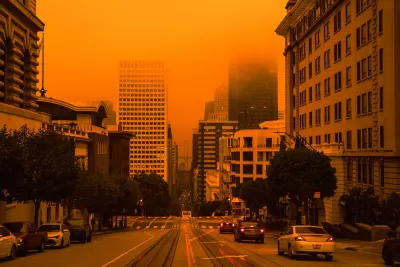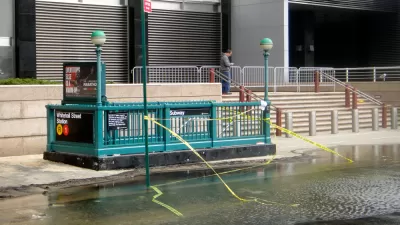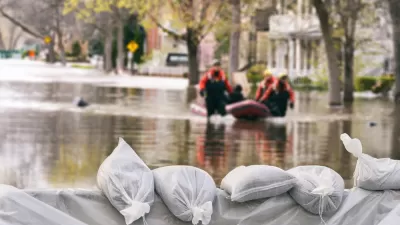Extreme weather events in the United States cost $165 billion and killed more than 474 people last year.

Damage from climate-related catastrophes in the United States cost roughly $165 billion in 2022, reports Zahra Hirji for Bloomberg Green. The figure comes from the National Oceanic and Atmospheric Administration (NOAA), which tracks major disasters and their damage in dollars and lives. “The 2022 price tag isn’t even complete because it doesn’t include the costs of that massive winter storm and cold spell in December.” As Hirji points out, “2022 was the nation’s third most expensive year for billion-dollar disasters by NOAA’s ranking, following 2017 ($373.2 billion) and 2005 ($253.5 billion).”
The growing intensity of weather disasters and their destruction isn’t limited to the United States. “Severe weather events and other disasters globally cost roughly $120 billion in insured losses and $270 billion in uninsured losses last year, according to estimates by insurance giant Munich Re.”
According to NOAA Administrator Richard Spinrad, climate change plays a significant role in creating bigger and more destructive weather events. Extreme weather events also build on each other, such as when heavy rainfall triggers mudslides and flooding in areas previously affected by wildfires, a vicious cycle increasingly evident in California, where wildfires are now the second largest source of the state’s carbon emissions.
FULL STORY: US Climate Disasters Racked Up $165 Billion in Damage in 2022

Planetizen Federal Action Tracker
A weekly monitor of how Trump’s orders and actions are impacting planners and planning in America.

Maui's Vacation Rental Debate Turns Ugly
Verbal attacks, misinformation campaigns and fistfights plague a high-stakes debate to convert thousands of vacation rentals into long-term housing.

San Francisco Suspends Traffic Calming Amidst Record Deaths
Citing “a challenging fiscal landscape,” the city will cease the program on the heels of 42 traffic deaths, including 24 pedestrians.

Defunct Pittsburgh Power Plant to Become Residential Tower
A decommissioned steam heat plant will be redeveloped into almost 100 affordable housing units.

Trump Prompts Restructuring of Transportation Research Board in “Unprecedented Overreach”
The TRB has eliminated more than half of its committees including those focused on climate, equity, and cities.

Amtrak Rolls Out New Orleans to Alabama “Mardi Gras” Train
The new service will operate morning and evening departures between Mobile and New Orleans.
Urban Design for Planners 1: Software Tools
This six-course series explores essential urban design concepts using open source software and equips planners with the tools they need to participate fully in the urban design process.
Planning for Universal Design
Learn the tools for implementing Universal Design in planning regulations.
Heyer Gruel & Associates PA
JM Goldson LLC
Custer County Colorado
City of Camden Redevelopment Agency
City of Astoria
Transportation Research & Education Center (TREC) at Portland State University
Jefferson Parish Government
Camden Redevelopment Agency
City of Claremont





























